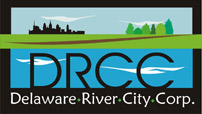The Delaware River has brought life and commerce to the greater Philadelphia area for centuries. The first known inhabitants were the Lenni Lenape, whose culture and economy were based on the river’s resources. Beginning in 1524, European immigrants settled along the Delaware’s shores to fish and work in factory towns. Philadelphia became a thriving port, but its prosperity reduced the very resources it was built on, as the river became an open sewer and a breeding ground for disease. These changes adversely affected the communities that developed along it.
In 1972, the Clean Water Act spurred a cleanup of the river, but persistent stormwater management issues, industry, and accidents such as the 2004 Athos I oil spill continue to affect the Delaware River. The Delaware is a resilient river: native wildlife still inhabits its waters and shores, and local and regional restoration projects will conserve these for current and future generations. The Delaware provides most of Philadelphia’s drinking water and supports local businesses to regional economies.
Many government agencies, non-profits, and concerned communities have begun addressing the revitalization of the river and its communities. The Delaware River City Corporation (DRCC) is one such organization. The DRCC aims to reconnect communities with the Delaware River by building greenways and parks along its shores. These developments and their enabling policies will return the riverfront to a vibrant place to live, work, and play.
